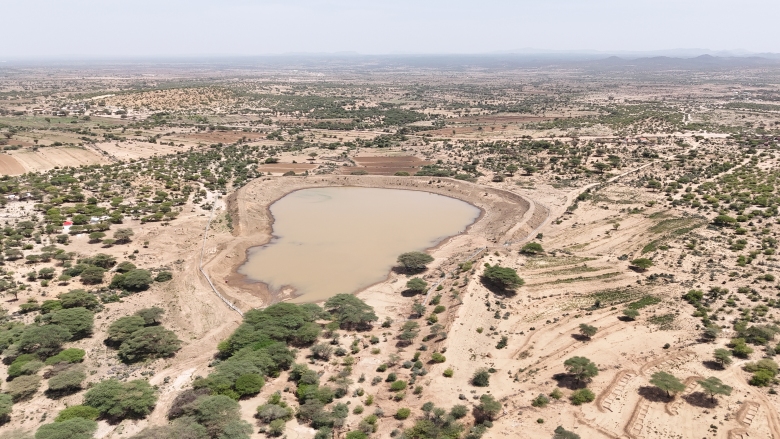What Is the Planetary Health Diet and Why It Matters – News-Medical

Report on the Planetary Health Diet and its Contribution to the Sustainable Development Goals
Introduction: A Framework for Sustainable Development
The Planetary Health Diet (PHD), established by the EAT-Lancet Commission, presents a comprehensive framework designed to align human nutritional requirements with the planet’s ecological limits. This report analyzes the PHD’s principles and impacts, with a significant emphasis on its role in advancing the United Nations’ Sustainable Development Goals (SDGs). The diet’s core objective is to ensure healthy lives and promote well-being (SDG 3) while fostering sustainable consumption and production patterns (SDG 12), thereby addressing critical challenges of the 21st century.
Core Principles and Alignment with SDG 12: Responsible Consumption and Production
The PHD is a flexitarian dietary model that provides a universal reference for sustainable food consumption. Its principles are fundamentally aligned with SDG 12 (Responsible Consumption and Production) by promoting a shift away from resource-intensive food systems.
Key Dietary Components:
- Emphasis on Plant-Based Foods: The diet prioritizes vegetables, fruits, whole grains, legumes, and nuts.
- Limited Animal Products: Consumption of red meat is significantly reduced, with moderate intake of poultry, fish, and eggs.
- Focus on Unsaturated Fats: Unsaturated oils are favored over saturated fats.
- Reduction of Processed Foods: Intake of ultra-processed foods, added sugars, and starchy vegetables like potatoes is minimized.
This model is intentionally designed for global adaptability, allowing for cultural and regional modifications while adhering to the overarching goals of planetary and human health.
Impact Analysis: Contribution to Key Sustainable Development Goals
The adoption of the Planetary Health Diet offers substantial benefits that directly contribute to several SDGs, most notably in the areas of health, climate, and biodiversity.
SDG 3: Good Health and Well-being
The PHD is structured to combat the rising prevalence of non-communicable diseases (NCDs), a primary target of SDG 3. By promoting a nutrient-dense, plant-rich diet, it helps achieve the following health outcomes:
- Reduced risk of cardiovascular disease, type 2 diabetes, and obesity.
- Lowered risk of certain cancers, particularly colorectal cancer, by minimizing intake of processed and red meats.
- Improved metabolic health and reduced chronic inflammation through increased fiber and whole food consumption.
SDG 13, 14, and 15: Climate Action and Biodiversity
The diet’s environmental benefits are central to its design, addressing multiple environmental SDGs simultaneously.
- Climate Action (SDG 13): By reducing global demand for livestock, a major source of greenhouse gas emissions, the PHD directly contributes to mitigating climate change.
- Life Below Water (SDG 14): The diet encourages judicious consumption of seafood from sustainable sources, helping to protect marine biodiversity and prevent overfishing.
- Life on Land (SDG 15): Shifting to plant-based food production reduces the pressure on land resources, limits deforestation, promotes healthier crop rotations, and improves soil health, thereby protecting terrestrial ecosystems and biodiversity.
Global Implementation: Addressing SDG 2 and SDG 10
The successful global implementation of the PHD hinges on its adaptability and the ability to overcome significant socioeconomic challenges, which are critical for achieving SDG 2 (Zero Hunger) and SDG 10 (Reduced Inequalities).
Adaptability and Cultural Considerations
The EAT-Lancet Commission provides flexible intake ranges, enabling countries to adapt the diet to local cuisines, agricultural systems, and supply chains. Adherence varies globally, with Mediterranean regions showing high alignment due to their traditional plant-rich diets, while nations in the Americas report lower adherence due to higher red meat and sugar consumption.
Challenges: Affordability, Accessibility, and Nutrient Adequacy
Significant barriers hinder the widespread adoption of the PHD, particularly in ways that could exacerbate inequalities.
- Economic Barriers: In low-income settings, affordability is a primary challenge, as nutrient-dense foods like fruits, vegetables, and legumes can be more expensive than refined staples. In high-income countries, agricultural subsidies often make meat artificially cheaper than fresh produce.
- Accessibility Issues: Lack of infrastructure, such as reliable cold storage and transportation, can limit access to diverse, perishable plant-based foods, particularly in developing regions.
- Nutrient Adequacy: If not carefully planned, a plant-forward diet can lead to deficiencies in key micronutrients like vitamin B12, iron, zinc, and calcium. This poses a risk to vulnerable populations and undermines efforts to achieve SDG 2, which targets an end to all forms of malnutrition.
Strategic Recommendations for Implementation
To scale the adoption of the Planetary Health Diet and achieve related SDGs, a multi-sectoral approach is required.
- Policy and Governance: Governments must integrate sustainability into national dietary guidelines, utilize clear front-of-pack labeling, and reform agricultural subsidies to favor the production of diverse, nutrient-dense plant foods.
- Supply Chain Transformation: Investment is needed in infrastructure (irrigation, storage, transport) to reduce food loss and waste, a key target of SDG 12. This will improve the affordability and accessibility of healthy foods.
- Public Engagement and Education: Community-led initiatives, supported by public policy, are essential for mobilizing social support and ensuring that dietary transitions are culturally appropriate and equitable.
Analysis of Sustainable Development Goals in the Article
1. Which SDGs are addressed or connected to the issues highlighted in the article?
The article on the Planetary Health Diet (PHD) addresses several Sustainable Development Goals by linking human health, nutrition, environmental sustainability, and economic factors. The following SDGs are relevant:
- SDG 2: Zero Hunger: The article discusses nutritional adequacy, access to diverse and affordable foods, and sustainable agricultural practices, which are central to ending hunger and all forms of malnutrition. It highlights challenges in low-income settings where access to nutritious food is limited.
- SDG 3: Good Health and Well-being: A primary focus of the article is the health benefits of the PHD, such as reducing the risk of non-communicable diseases (NCDs) like cardiovascular disease, type 2 diabetes, and certain cancers. This directly aligns with promoting well-being for all ages.
- SDG 12: Responsible Consumption and Production: The PHD is fundamentally a framework for sustainable consumption. The article emphasizes reducing the consumption of resource-intensive products (like red meat), promoting plant-rich diets, and reducing food waste along the supply chain.
- SDG 13: Climate Action: The environmental impact section explicitly states that the PHD “lowers climate impacts” and reduces “greenhouse gas emissions” by shifting food consumption patterns away from emission-intensive animal agriculture.
- SDG 15: Life on Land: The article connects the PHD to terrestrial ecosystems by explaining how it can “support biodiversity and soil health,” reduce “incentives for deforestation and monocultures,” and limit soil erosion and runoff through better agricultural practices.
2. What specific targets under those SDGs can be identified based on the article’s content?
Based on the article’s discussion of the Planetary Health Diet, several specific SDG targets can be identified:
-
Under SDG 2 (Zero Hunger):
- Target 2.1: By 2030, end hunger and ensure access by all people, in particular the poor and people in vulnerable situations, including infants, to safe, nutritious and sufficient food all year round. The article addresses this by discussing the affordability and accessibility of the PHD, especially in “low-income settings” where “limited purchasing power” is a major challenge.
- Target 2.2: By 2030, end all forms of malnutrition. The article directly relates to this target by discussing how the PHD can improve “nutrient density” but also warns that “nutrient adequacy is a concern” if not planned carefully, mentioning potential deficiencies in calcium, iron, and zinc.
- Target 2.4: By 2030, ensure sustainable food production systems and implement resilient agricultural practices. The article calls for a transition toward “diversified production of fruits, vegetables, legumes, and nuts,” “healthier crop rotations,” and “reduced fertilizer loads” to improve soil health and sustainability.
-
Under SDG 3 (Good Health and Well-being):
- Target 3.4: By 2030, reduce by one-third premature mortality from non-communicable diseases (NCDs). The article explicitly supports this target by stating that sustainable diets like the PHD are “associated with a reduced risk of major non-communicable diseases, including cardiovascular disease and type 2 diabetes” and may lower the risk of “colorectal cancer.”
-
Under SDG 12 (Responsible Consumption and Production):
- Target 12.2: By 2030, achieve the sustainable management and efficient use of natural resources. The article highlights that the PHD “reduces demand for resource-intensive products” and “lowers climate impacts and pressure on croplands and irrigation, thereby conserving water and preventing soil depletion.”
- Target 12.3: By 2030, halve per capita global food waste at the retail and consumer levels and reduce food losses along production and supply chains. This is directly mentioned as a key strategy: “Reducing food waste along the supply chain is also a key strategy to improve both environmental and nutritional outcomes.”
-
Under SDG 13 (Climate Action):
- Target 13.2: Integrate climate change measures into national policies, strategies and planning. The article advocates for this by suggesting that “National dietary guidelines should also integrate sustainability considerations” and that agricultural policies should shift to “reduce greenhouse gas emissions.”
-
Under SDG 15 (Life on Land):
- Target 15.5: Take urgent and significant action to reduce the degradation of natural habitats, halt the loss of biodiversity. The article connects the PHD to this target by stating it can “support biodiversity and soil health” and “reduce incentives for deforestation and monocultures.”
3. Are there any indicators mentioned or implied in the article that can be used to measure progress towards the identified targets?
The article mentions or implies several indicators that can be used to measure progress:
- Planetary Health Diet Index (PHDI): The article explicitly introduces the “Planetary Health Diet Index (PHDI),” which scores adherence on a scale of 0 to 140. This serves as a direct indicator for measuring the adoption of sustainable consumption patterns (relevant to SDG 12). The article provides examples of PHDI scores for various countries.
- Prevalence of Non-Communicable Diseases (NCDs): The article’s focus on reducing the risk of “cardiovascular disease and type 2 diabetes” and “colorectal cancer” implies that the incidence and mortality rates of these diseases are key indicators for measuring the health impact of the diet (relevant to SDG 3).
- Prevalence of Overweight and Obesity: The article mentions that sustainable diets are associated with a reduced risk of “obesity and overweight,” making their prevalence a relevant health indicator (relevant to SDG 3).
- Greenhouse Gas Emissions from Agriculture: The article states that the PHD “lowers climate impacts” and can “reduce greenhouse gas emissions.” Therefore, measuring GHG emissions from the food sector would be a key environmental indicator (relevant to SDG 13).
- Rates of Deforestation and Land Use Change: By mentioning that the PHD reduces “incentives for deforestation” and pressure on “croplands,” the article implies that tracking land use change and deforestation rates are relevant indicators (relevant to SDG 15).
- Food Waste and Loss Percentages: The direct call for “Reducing food waste along the supply chain” makes the measurement of food loss and waste at different stages a critical indicator (relevant to SDG 12).
- Nutrient Intake Levels: The discussion of “nutrient adequacy” and potential deficiencies in “calcium, iron, zinc, vitamin D, and vitamin B12” implies that population-level data on nutrient intake can be used as an indicator to ensure the diet is meeting nutritional goals (relevant to SDG 2).
4. Summary Table of SDGs, Targets, and Indicators
| SDGs | Targets | Indicators |
|---|---|---|
| SDG 2: Zero Hunger |
|
|
| SDG 3: Good Health and Well-being |
|
|
| SDG 12: Responsible Consumption and Production |
|
|
| SDG 13: Climate Action |
|
|
| SDG 15: Life on Land |
|
|
Source: news-medical.net

What is Your Reaction?
 Like
0
Like
0
 Dislike
0
Dislike
0
 Love
0
Love
0
 Funny
0
Funny
0
 Angry
0
Angry
0
 Sad
0
Sad
0
 Wow
0
Wow
0










/campaigns/16-days-of-activism-against-gender-based-violence/pr-web-banner.tmb-1200v.jpg?sfvrsn=8cc7b98e_1#)






































































